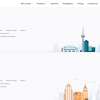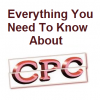I strongly believe that if an advertiser is to pick out the most important statistic in their campaign, it is the conversion rate. To put it into ![[How to] Increase Your PPC Campaign's Conversions [Part 1]](http://ppc.org/wp-content/uploads/2013/01/How-to-Increase-Your-PPC-Campaigns-Conversions-Part-1.jpg)
Micro-site
A micro-site, as it says in the name, is almost like a ‘branch’ off the main website where they may have their own URL (but still linked to the main website). To increase the conversion rate of a micro-site, you will need to link your campaign as much with your landing page. Do no clatter your micro-site with useless and irrelevant information: the most successful micro-sites are based on one topic only with a clear and simple theme adapted from the main website.
Homepage
This type of landing page is when you literally send your PPC traffic to the landing page of your website’s homepage. For this reason, a conversion may be literally to have brand awareness. Therefore, you have the option to not adapt your homepage to your PPC campaign. If your conversion is to literally pay to get traffic onto your homepage, then you have succeeded.
Click Through Pages
It is very clear that click through pages base their conversion rate on the actions the web user will do on the landing page such as a click. A click through page can therefore be compared to an advert quite easily (both are requiring an action which, the majority of cases, is a click). Therefore, base your click through page on the style of advert you have adopted for your PPC campaign. You should be able to draw strong comparisons between your advert and click through page in order to make sure you achieve a high conversion rate (the web user has already clicked on your advert. If you base your landing page on your advert, they are bound to click on it again).
Lead Capture Page
A lead capture page has the purpose to gain as much information about the web user as possible. Therefore, many lead capture pages will require you filling in information about yourself such as your name, email address (<– this is very common) and even your address. An example of a lead capture is Pepsi’s PPC Campaign. From this, one of the best ways to improve the conversion rate of your lead capture page is through asking for less. This sounds wrong but, it will increase your conversion rate. Most web users will exit the page if they see that they have to enter more than five lines of information. Therefore, it is sometimes better to just ask the bare minimum information needed to gain a conversion from the web user. From this, it is a good idea to look back on the information you want from the web user and ask ‘do I really need it?’. The majority of times, the answer will be yes. Sometimes, it will be no which is where you can improve your conversion rate.
This is a part one of two article. Look out for the part two on PPC.org.

![[How to] Increase Your PPC Campaign](https://www.ppc.org/wp-content/uploads/2013/01/How-to-Increase-Your-PPC-Campaigns-Conversions-Part-1.jpg)


